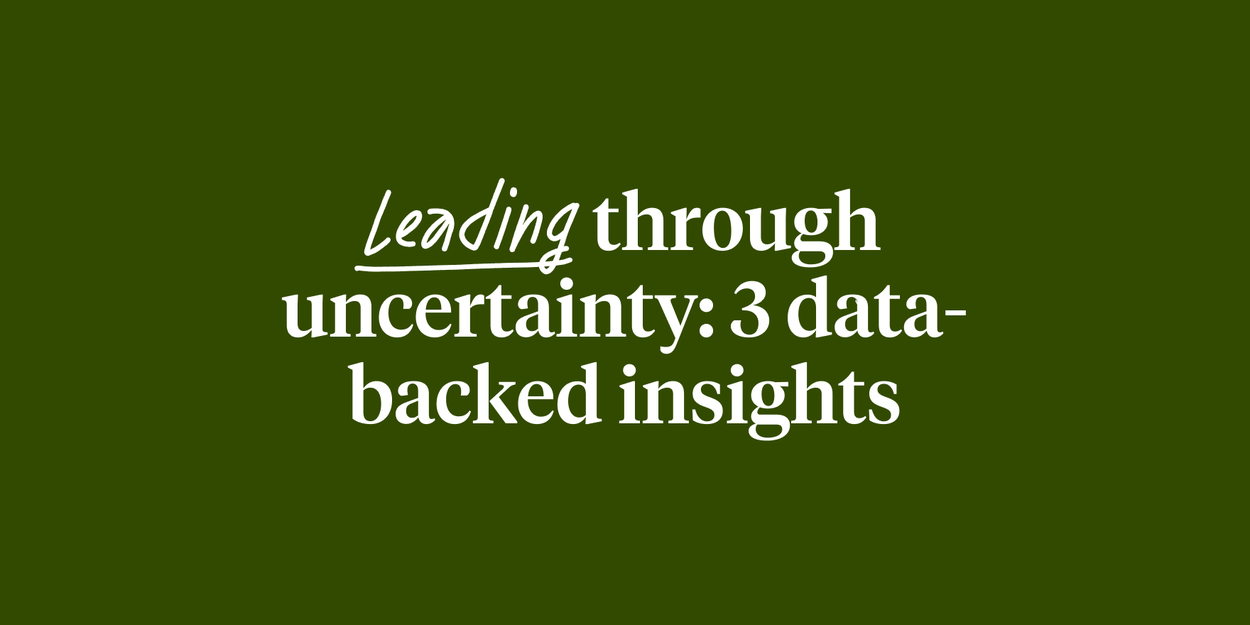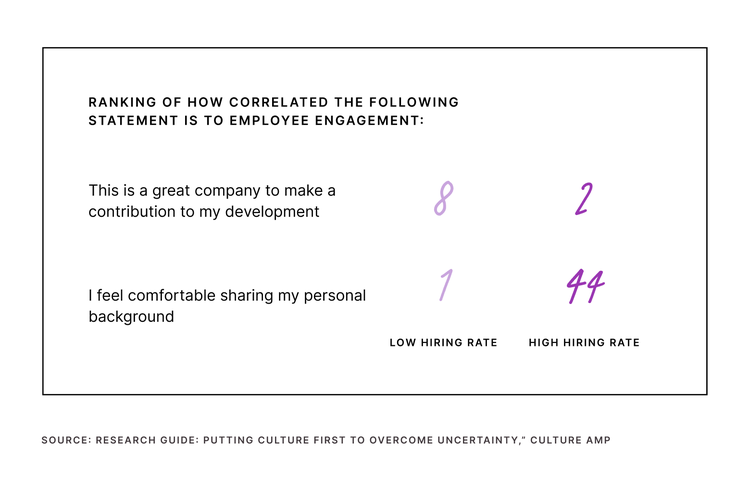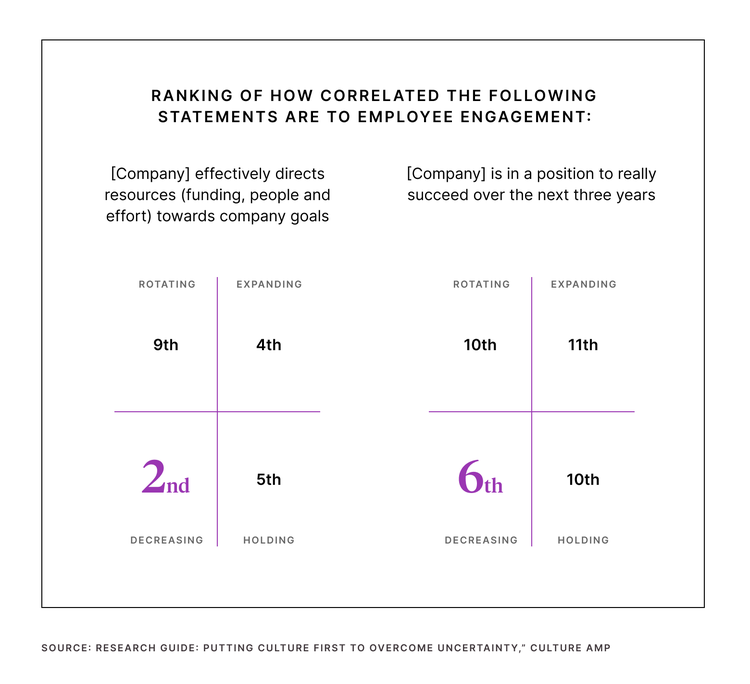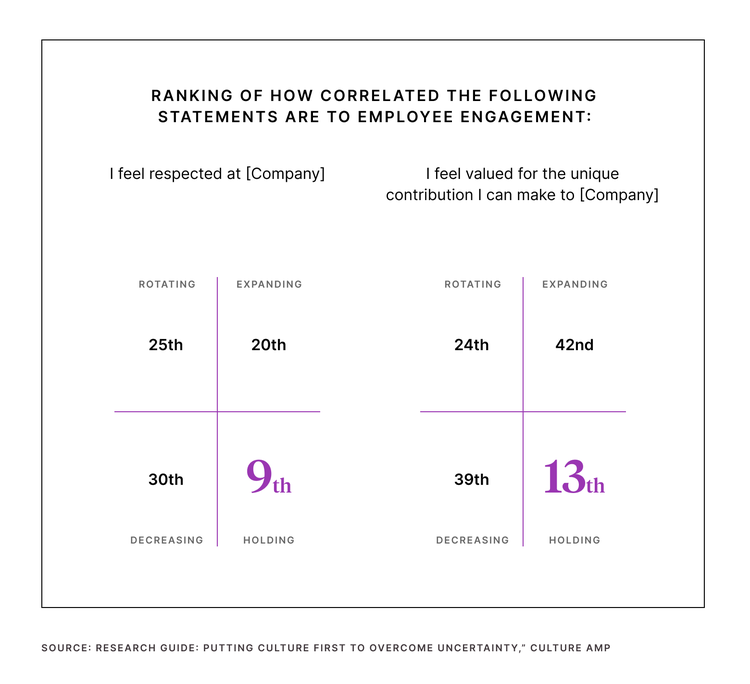
Leading through uncertainty: 3 data-backed insights

Written by

Senior Content Marketing Manager, Culture Amp
The future has always been impossible to predict, but modernization and globalization have accelerated the rate of change. As a result, it’s become increasingly difficult for individuals and organizations to keep pace with a constantly changing world.
In 2022, people are grappling with a multitude of unknowns, including:
- The worldwide rise in inflation
- Possibility of a global recession
- Geopolitical instability and conflict
Unsurprisingly, leaders around the world and across industries are struggling to adapt to these uncertainties, which they have little control or influence over. Fortunately, organizations have one powerful lever that can help them overcome the unknown: their culture.
Company culture determines how quickly companies can pivot in difficult times, how productively and efficiently employees work, and how committed employees are to going above and beyond. In all these ways and more, company culture can make or break your organization’s ability to successfully overcome periods of uncertainty.
In Culture Amp’s latest research, our people scientists crunched the numbers on over 1.8 million employees from 2,483 companies worldwide to uncover how companies can lay a resilient culture-first foundation for the future. Specifically, we focused on the impact of retention and hiring on the employee experience.
Three insights into leading through uncertainty
Below, we share three key findings from the interactive research guide “Putting culture first to overcome uncertainty.”
Employees at low-hiring companies prioritize psychological safety
To understand what keeps employees engaged at a given company, we utilized a statistical technique known as driver analysis. This technique allows us to identify the questions that engaged employees feel most positively about and the questions that disengaged employees feel the most negatively about.
Then, we ranked these questions in order of importance to identify each question’s driver rank. The higher a question’s driver rank, the more strongly employees care about the question – and the more it affects engagement.

According to the data, employees at low-hiring companies are most significantly engaged by psychological safety (#1). This is in stark contrast to high-hiring companies, which rank psychological safety as #44. The difference suggests that employees at high-hiring companies and low-hiring companies have different expectations and desires from their organizations.
At low-hiring companies, employees appear to be accustomed to – and genuinely enjoy – working with the same coworkers for many years. The company’s low hiring rate probably encourages current employees to bond more deeply with others in the workplace, thus fostering a strong sense of camaraderie within the “work community.”
On the other hand, employees at high-hiring companies seem to care a lot about employee development, which our people scientists identified as the second-most influential driver of engagement. This suggests that these employees want (and hope) that the company’s high pace of growth will provide opportunities for career growth and professional development.
Of course, this doesn’t mean that employees at low-hiring companies don’t care about employee development – it’s just that psychological safety is uniquely engaging at low-hiring organizations. Acting in accordance with these expectations (i.e., focusing on psychological safety vs. development) can help you strengthen your organizational culture and set your organization up to weather potentially difficult times.
Employee development is the top reason employees join or leave a company across the board
Our People Scientists found that regardless of a company’s hiring or retention rate, the top reason selected for joining a company in onboarding surveys and leaving a company in exit surveys is employee development.
These findings suggest that many companies entice employees with an ideal image of career growth but ultimately fail to fulfill those promises. With all the ambiguity that is ahead, it would be extremely smart for organizations to remedy this and make employee development a top priority. The last thing you’d want to happen during a difficult period is to have critical projects or processes fall apart because your employees decide to leave the organization in search of better career development.
Additionally, if your organization has to make the hard decision of laying off employees, you can use employees’ aspirations for where they’d like to develop to determine how to redistribute the remaining work.
The employee experience differs depending on the intersection of your hiring and retention rate
An interesting story emerged when our People Scientists considered how the intersection of hiring and retention practices can impact the employee experience. We identified four different company types, all with distinct employee experiences:
- Expanding (High retention/High hiring)
- Rotating (Low retention/High hiring)
- Holding (High retention/Low hiring)
- Decreasing (Low retention/Low hiring)
For example, we found that employees at Decreasing companies care a lot about whether the organization is tracking in the right direction. The strongest drivers of engagement at these companies are:
- Whether the company is effectively directing resources towards company goals (#2)
- An employee’s belief that the company will succeed in the future (#6)
This suggests that employees that choose to stay at Decreasing companies are motivated by the opportunity to be a part of a “comeback” story.

Meanwhile, employees at Holding companies are uniquely motivated by respect (#9) and recognition (#13). Since they’ve worked at the same company for likely a long time, these employees want to know that their commitment and contributions are being properly rewarded.




